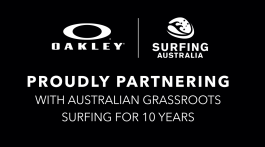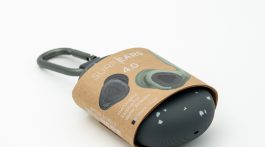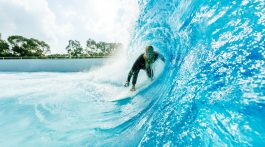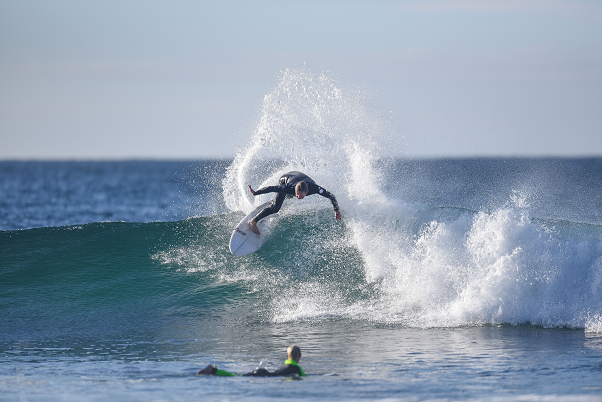STEVE KAY – RIP CURL’S AUSTRALIAN PACIFIC CEO IS MOVING ON
Interview by Reggae Elliss
After 16 years at Rip Curl, Steve Kay, current CEO of Rip Curl Australia, Asia and the Pacific is stepping down at the end of October. It is the end of a long career in the surf industry that started when Steve took up the job as Tracks magazine advertising manager in 1986. That lead to 14 years with the magazine’s publishers in Sydney before Steve was lured from line-up at North Narrabeen to RC’s Torquay headquarters in 2000.
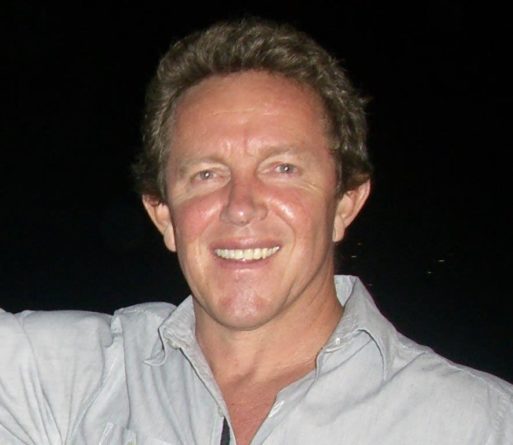
It’s a rare opportunity to talk to the CEO of one of the major international surf companies and interesting to hear Steve’s take on the surf industry over the past 15 years and its health moving into the future.
When did you start at Rip Curl and what was your first job there?
I started work with Rip Curl in April 2000 as the Global Advertising and Promotions Manager. My first official duty was to present the Bell to the winner of the Rip Curl Pro that year, Sunny Garcia. The final was held at Gibson’s Steps and the locals wanted to kill someone from Rip Curl. I think that’s why I got to do the presentation. It was probably lucky for me that Sunny was the winner!
At the time Brian and Claw (Doug Warbrick) had become aware of the need to present a more unified global look and feel for the brand, so I spent quite a bit of time on planes in the early years getting all of the Rip Curl regions on board with using the same logos and advertising campaign layouts.
When did you switch to the management role?
I became the General Manager for Rip Curl Australia and New Zealand in March 2003. When I moved to Torquay from Sydney to work for Rip Curl Claw and Brian made it clear to me that they wanted to step back from their day to day executive duties, and that there were opportunities for me to progress quickly within the business if I could get my head around what made the company tick. I went through an accelerated learning process. In addition to my marketing responsibilities I became deeply involved in Sales, and I worked closely with Claw for a couple of years on mountainwear product development. On top of that I was also responsible for the launch of Rip Curl footwear into Australia at the same time. Needless to say, it was a busy time for me.
In 2009 I was promoted to CEO Rip Curl Asia Pacific with responsibilities that included our businesses in Indonesia, Thailand, SE Asia, the Middle East and Canada.
You came in around the same time Billabong listed as a public company and there were expectations that Rip Curl would eventually follow suit. That never happened – why?
This would be a better question for Rip Curl’s owners. From my perspective, it did look as though Rip Curl at least flirted with the idea of listing at the time when James Strong was appointed as the Chairman of the Board of Rip Curl. James was a brilliant man who had had a stellar career with Qantas and later as the Chairman of Woolworths. When Billabong and Quiksilver began to face serious problems as publicly listed companies, I think that they concluded that Rip Curl was better off as a private company.
Some of Rip Curl’s competitors have had a very public rocky ride over the years, share prices crumbling, massive debt and that lead to the perception that the surf industry was a bit of basket case. Was that an accurate appraisal?
I’m sure that the surf industry is currently viewed with some skepticism by financial markets, particularly in Australia and the USA. The problems that Surfstitch has experienced in recent times will not have improved things.
That said, the sport of surfing seems to be particularly healthy to me right now. We are certainly seeing this in our global wetsuit sales. On top of this I am finding it harder and harder to find uncrowded waves, regardless of where I am in the world. I recently had a super crowded surf in Korea. There are not too many quiet backwaters left.
Some of our competitors have probably made a few investment decisions that they probably regret today, but their financial problems are not stopping them from developing good products. Billabong continues to deliver product ranges in Australia that impress me.
“Surf needs to keep “selling the dream” to a wide range of consumers, and we need to keep developing innovative new products which create a point of difference.”
How is the health of the industry now?
To start with a positive, I think that surfing is really resonating within core coastal communities and in tourist areas. I visited Paul Green’s Slimes Boardstore in Erina NSW last week and it looked fantastic. Surfection in Mosman was busy when I visited and very well stocked. I think that the problems for the industry start when you move away from the beach, and particularly in shopping malls. Mall-based retailing has become incredibly competitive in recent years with the arrival of international retailers like Zara, H&M and Uniqlo, and the growth of local retailers such as Cotton On. Surf retailing is no longer new or a novelty. We are just another option for non-surfing consumers. To succeed in major malls and CBD locations today you need to do everything right. Shop presentation and refurbishment, customer service, marketing and product assortment need to be spot on. More than anything, we need a constant stream of new product to compete with the vertical players.
After reading the most recent end of financial year reports I am concerned about the current low profits being achieved in the surf industry. Whilst we may be just facing a cyclic downturn in the industry, I am concerned that a prolonged slump in profits may lead to lower marketing and new product development investment.
I fear that given the changes in the size and ownership of the Australian surf market, there may be too many wholesalers trying to compete for a smaller pie, leading to marginal profitability and reduced marketing expenditure. That said, I admire the resilience and determination I see in many Australian surf wholesalers.
Surf needs to keep “selling the dream” to a wide range of consumers, and we need to keep developing innovative new products which create a point of difference between surf and the cheaper vertical retailers, many of whom extensively reference our products.
Over the past 10 years, in many ways Rip Curl has gone from being a wholesale business and to a retailer as well. What drove that decision?
Let me start by saying that Rip Curl loved being purely a wholesaler !!! Life was easier then, and we got to go surfing more.
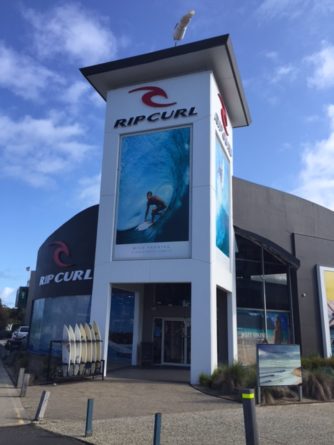
However, from around 2006 (well before the GFC) many of our mall based retailers began to falter. Rapid rent increases and new competitors led to an avalanche of store closures including Brothers Neilsen, Shady Haze and Wild in Newcastle. Facing a difficult market outlook, retailers like City Beach were forced to adopt a more vertical approach to retailing, leading to fairly significant declines in our orders with them.
In critical surf markets like the Gold Coast we suddenly found ourselves without adequate representation, and with limited external wholesale options. We were basically forced to open some stores in places like the Pacific Fair Mall to make up for lost representation. Once we discovered that we could cut it as a retailer outside of our home town of Torquay other opportunities began to emerge and our retail footprint has slowly grown ever since.
In recent years we have opened some new stores in areas where we have been unable to generate sufficient product penetration with our existing external wholesale accounts or where no existing wholesale accounts were in operation. In places like the Sunshine Coast in Queensland, this has led to a dramatic increase in the visibility of our products.
We have built a strong network of airport stores in recent years. We see these stores as part of our overall brand presence in Australia.
Initially it was just Rip Curl stores, but then Osmosis was purchased and now Planet Surf. I read that makes Rip Curl the biggest surf retailer in the country.
At the beginning we were concerned about GSM rapid push into multi brand retailing in Australia and New Zealand. We did not like the idea of being effectively “locked out” of Australia’s shopping malls so we decided to act. Initially we purchased the Waves/City Surf chain from Chris Prastidis in Western Australia. Right from the start we recognised that this would not give us the scale that we needed, so I started a dialogue with Tom Cahill from Ozmosis which led to the acquisition of the chain in 2011.
We quickly discovered that multi brand surf retailing in high rent premium Australian shopping malls is not for the faint hearted. We soon realised that it was unlikely that there would be a resurgence in independent surf retailers in major malls, and that if we wanted to see surf represented in malls, that we would need to assume some responsibility for this as a retailer. Peninsula Surf was a retail business that we admired. When they wanted to sell we were willing buyers and the business has fitted into our portfolio really well. The Planet Surf acquisition has given us a little more scale in the Victorian market.
We are definitely not the largest surf retailer in Australia, but we are clearly 100% committed to specialty surf retailing in Australia and New Zealand, primarily as a wholesaler, and more recently as a retail participant.
How has the reaction from independent multi-brand retailers been to RC’s retail expansion?
I have no doubt that our retail expansion has caused some concern for some independent multi brand retailers, but I feel that these will/have subsided when they realise that we are committed to presenting surf as a premium retailing proposition and that we are very disciplined in the way that we operate our retail businesses, particularly when it comes to “sale” activity and discounting in general.
Our view is that we were forced to become a retailer to ensure that consumers who wish to purchase a Rip Curl product can find a fair representation of our products in their local region. I have always said that we would rather be a straight up wholesaler …. but if there was no other choice we would rather have some retail exposure than be out of business!!
“We are committed to presenting surf as a premium retailing proposition and that we are very disciplined in the way that we operate our retail businesses.”
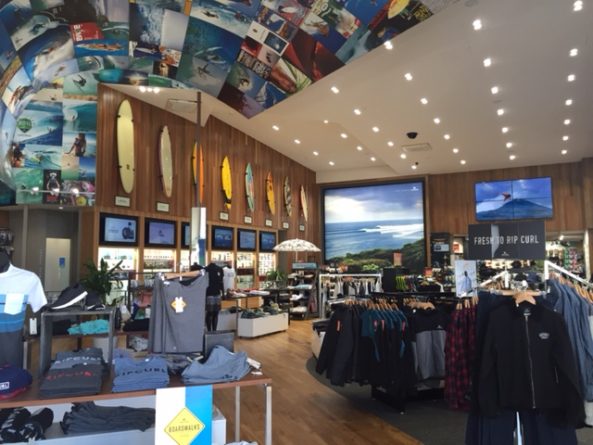
You were one of the first brand members on the SBIA board. What is the value for a major brand like RC to be involved with the SBIA?
I think it’s important for surfing/boardsports to have an industry body where issues facing the industry can be discussed, where achievements can be celebrated through the awards night, and where the tribe can meet and celebrate how lucky we are to be able to work in such an amazing environment. I want to commend Anthony “Macka” Wilson for the amazing commitment he has shown to the organization.
It is still early days for the organisation. I think that improvements still need to be made in key areas like the voting process for board positions. I think that the Presidency should be shared between both retail and brand members. Whilst I think that the organisation has done a commendable job with the awards program, I would like to continue to work towards a position where there is greater diversity of award winners, both for brand and retail awards.
What role does the SBIA have to play? How is it relevant to a smaller one or two door operator?
I think that the SBIA has a very important role to play for smaller surf retailers.
From providing information on the latest developments in specialty retailing to practical advice on pay awards, insurance, credit card payments, staff training – the SBIA has a lot to offer. I am surprised that not every surf retailer wants to be involved with the organisation.
You started at Rip Curl way back in 2000 and in many ways the last 15 years have been some of the toughest in retail in general, not just surf retail. How has RC weathered the challenges?
There is no doubt that the Surf Industry is in a tougher place today than it was 15 years ago, but we are not alone. Just look at video rental shops!!
I think that Rip Curl has weathered the storm better than most companies in our market for the following reasons.
– We had clearly defined written Company Values and Principles which guided our decision making processes and new product development strategy.
– Our Mission Statement to be “The Ultimate Surf Company” protected us from the urge to move into new business categories. We maintained a narrow focus. Our marketing programs have been single minded in achieving this goal.
– We were more focused on the quality of our earnings than maximising top line sales. Strong profitability gives a company the ability to continue to reinvest in marketing and new product developments like the revolutionary Rip Curl GPS watch. It also gave us the opportunity to invest/acquire businesses when they met our narrow focused strategy. We are happy to have lower sales, through more credible forms of distribution. We think that consumers can see through “channel segmentation”.
– We have operated the business with discipline. We have tried to be fair to all of our customers. We have avoided widespread discounting. We do not clear excess stock on-line as we want to protect the price credibility of our products. We are committed to specialty surf retailing in Australia and NZ and have maintained a narrow targeted approach to distribution. We do not supply department stores or big box retailers.
Rip Curl have invested a lot of money in to pro surfing and pro surfers over the past 15 years. I know pro surfing has been part of RC’s marketing strategy for a long time – is it a worthwhile investment, does it pay off?
Rip Curl could not possibly be the global surf company that it is today without the investment it has made in pro surfing and events over the past 45 years. In many emerging surf regions our brand was well known years before our products were available in those markets, purely as a result of our event at Bells Beach.
Our success on both the men’s and women’s tours over the past 10 years has been impressive, particularly when you consider that our budget has been quite a bit smaller than other major surf companies. Doug “Claw”Warbrick has proven to have a canny knack for identifying elite surfing talent at a young age. He and Neil Ridgway our Global Marketing manager have done a great job in helping these athletes to develop and achieve world titles.
Rip Curl takes a long term approach to team and events. You do not always see an immediate increase in sales as a result of a Rip Curl athlete winning a world title…. it’s more just another step towards our company objective of being perceived as “the ultimate surfing company” by core surfers around the world.
You finish up as CEO at Rip Curl at the end of October. Why now – just had enough and want to go surfing more often?
No, the decision to step down as CEO is really just another example of Rip Curl’s disciplined approach to running our business. Thirteen years is a long time at the head of a large company like Rip Curl, and it is now time for a generational shift. The next generation of leaders has been trained and is itching to take over the never ending quest to “recruit the next generation”. It’s time for younger people to run the company on a day to day basis, implementing new ideas with fired up enthusiasm.
I am definitely looking forward to having three months off. It’s been 30 years since I have had that opportunity. That said, I would go insane if I retired completely right now. I enjoy business, and hey, the surfing industry is not too hard to take. We’re not selling coal or life insurance are we!!
I am going to spend about six weeks surfing the mid north coast with my kids and my new jet ski. After that I will be spending a couple of off season weeks in the Mentawaiis with the legend John McGroder on the Barrenjoey.
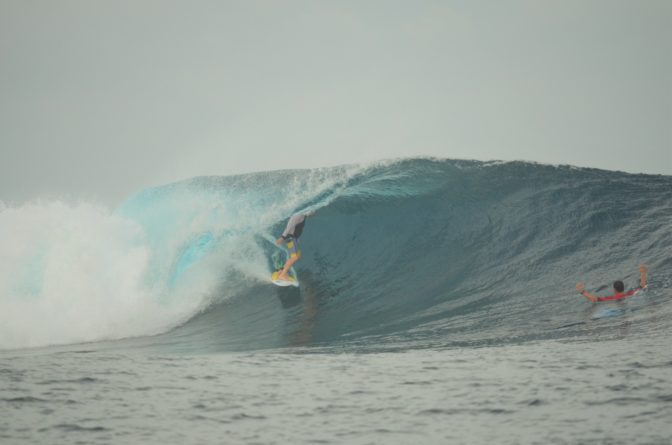
I have some new projects planned which should kick off in February. I’m looking forward to new challenges and working on my work/life balance.
Well, some would say you’ve always managed that OK. Thanks and all the best with the future.
No worries, thank you.

